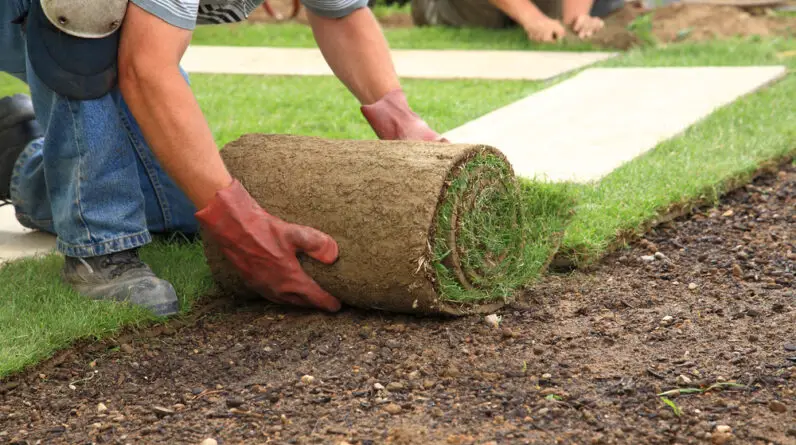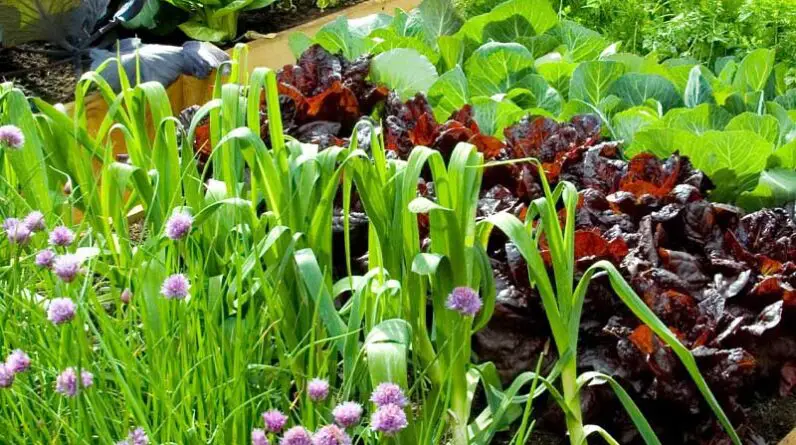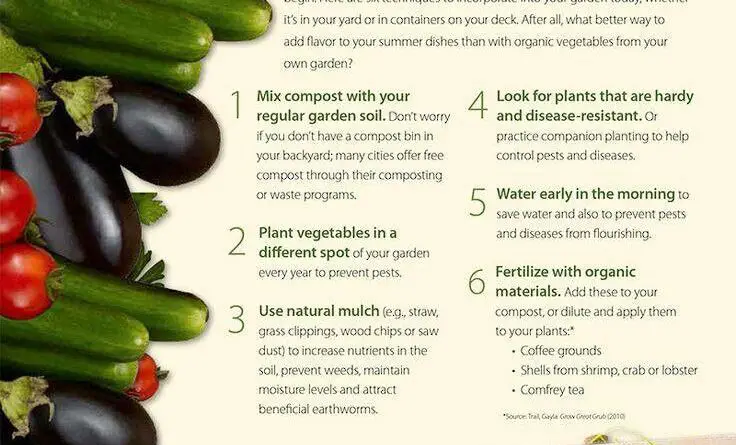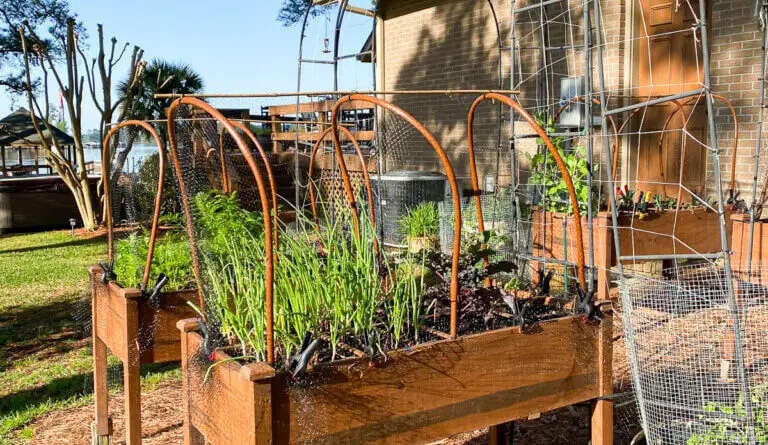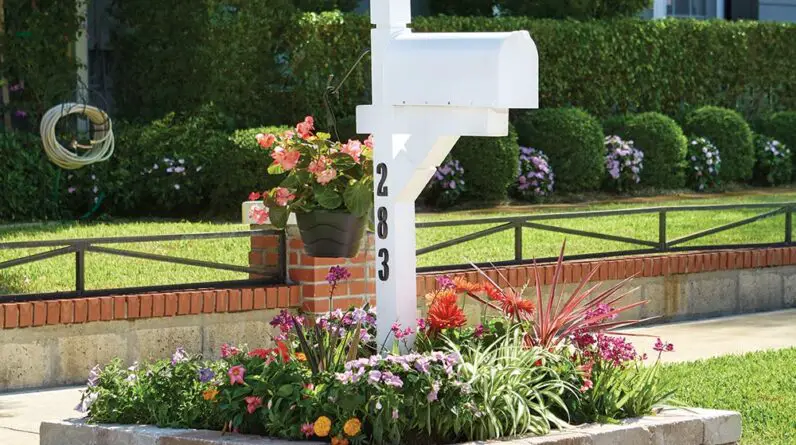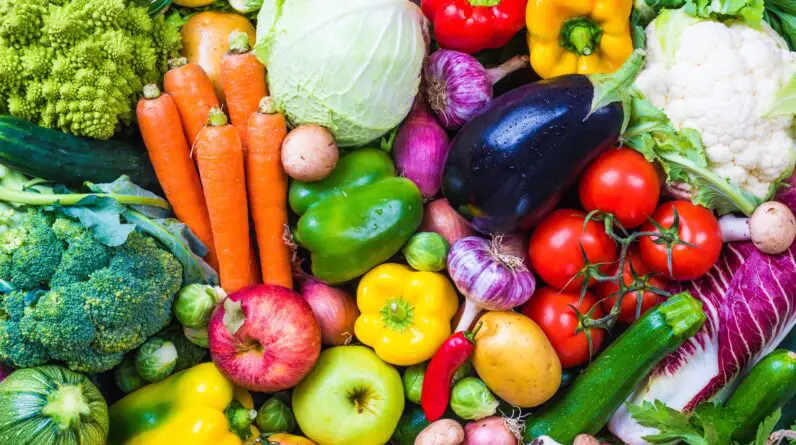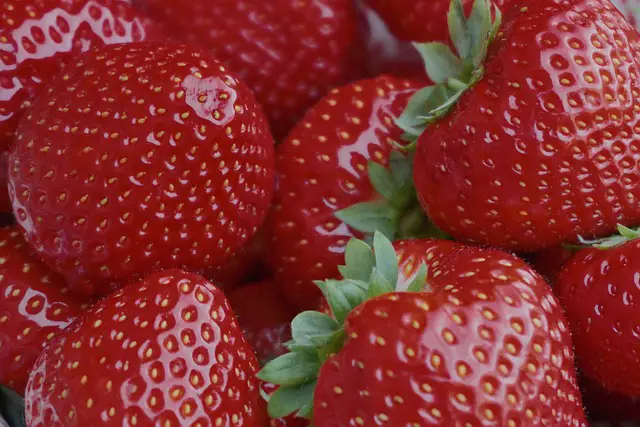
Introduction
Growing strawberries from seeds can be a rewarding and fulfilling experience for beginners. Not only will you get to enjoy a bountiful harvest of sweet and juicy strawberries, but you will also have the satisfaction of knowing that you nurtured these plants from tiny seeds.
Understanding the Basics of Growing Strawberries
Before diving into the process of growing strawberries from seeds, it’s important to understand the basics. Strawberries are perennial plants that belong to the Rosaceae family. They require well-draining soil, plenty of sunlight, and regular watering. Additionally, strawberries can be grown in containers, raised beds, or directly in the ground.
Why Growing Strawberries from Seeds is a Rewarding Experience
While purchasing strawberry plants from a nursery may seem like a convenient option, growing strawberries from seeds allows you to witness the entire growth process, from seed to fruit. This hands-on experience not only deepens your understanding of plant life, but it also gives you a greater appreciation for the efforts required to produce the food we eat.
By taking the time and effort to grow strawberries from seeds, you can also select specific varieties that suit your taste and preferences. From the vibrant red June-bearing strawberries to the smaller alpine varieties, the choices are endless.
So, let’s get started on this exciting journey of growing strawberries from seeds and immerse ourselves in the joys of watching these tiny seeds transform into delicious fruits.
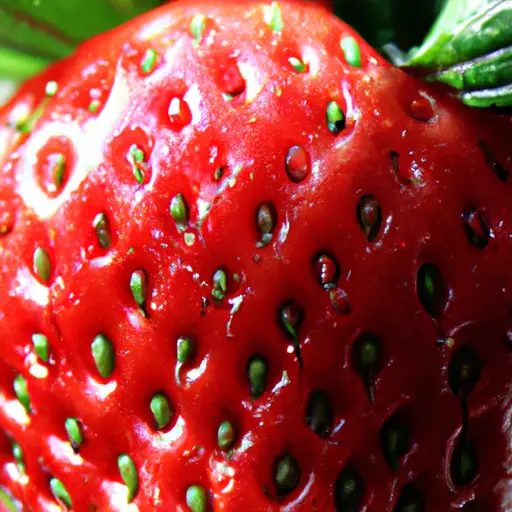
Choosing the Right Strawberry Seeds
Growing strawberries from seeds can be a rewarding and delicious experience. But where do you start? The first step is choosing the right strawberry seeds. In this section, I will explore different strawberry varieties and provide considerations for selecting healthy and high-quality seeds.
Exploring Different Strawberry Varieties
There are various strawberry varieties to choose from, each with its own unique characteristics and flavors. Some popular options include June-bearing varieties, which produce a large crop of strawberries in early summer. Everbearing varieties yield strawberries throughout the growing season, providing a longer harvest period. Finally, there are day-neutral varieties, which produce strawberries consistently throughout the summer months.
Considerations for Selecting Healthy and High-Quality Seeds
When selecting strawberry seeds, it is crucial to choose ones that are healthy and of high quality. Look for seeds from reputable suppliers or nurseries to ensure that you are getting the best possible seeds. Additionally, consider the variety’s resistance to diseases and pests, as this can impact the success of your strawberry plants. Lastly, check the seed packet for the expiration date to ensure that the seeds are fresh and viable.
By carefully considering the variety and quality of the strawberry seeds you choose, you set yourself up for success in growing your own strawberries from seeds. The next step is planting them, which we will explore in the next section. So let’s get started on this exciting strawberry-growing journey!
Preparing the Soil for Strawberry Seed Planting
Testing the Soil pH and Composition
Before planting strawberry seeds, it is important to prepare the soil properly to ensure optimal growth and a successful harvest. One of the first steps in soil preparation is testing the pH and composition of the soil.
To test the pH, you can purchase a soil testing kit from your local garden center or use a pH meter. The ideal pH range for strawberries is between 5.5 and 6.5. If the soil pH is outside of this range, adjustments can be made by adding either lime to raise the pH or sulfur to lower it.
In addition to pH, it is essential to assess the composition of the soil. Strawberries prefer well-draining soil, so sandy or loamy soil is ideal. If you have heavy clay soil, you may need to amend it to improve drainage.
Amending the Soil with Compost and Organic Matter
To improve the soil quality and fertility, amend the soil with compost and organic matter. Compost adds essential nutrients to the soil, improves its structure, and promotes beneficial microbial activity. Spread a layer of compost over the planting area and mix it into the top few inches of soil.
Creating Optimal Drainage for Strawberry Plants
Strawberries need well-drained soil to prevent their roots from becoming waterlogged, which can lead to root rot. To improve drainage, you can add organic matter such as compost or peat moss to the soil. This will help loosen compacted soil and create air pockets, allowing excess water to drain away.
Proper soil preparation is crucial for successful strawberry seed planting. By testing the pH and composition, amending the soil with compost, and creating optimal drainage, you will provide the ideal growing conditions for your strawberry plants.
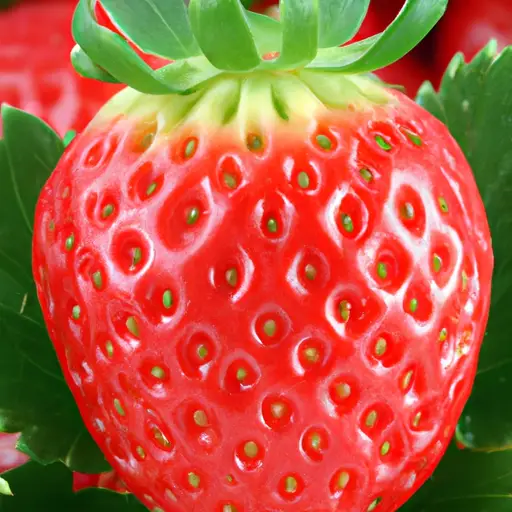
Sowing Strawberry Seeds
Understanding Ideal Planting Time and Climate
When it comes to growing strawberries from seeds, timing is crucial. It’s best to sow the seeds in early spring, after the last frost has passed and the soil has warmed up. As for the climate, strawberries thrive in cooler temperatures, ideally between 60-80°F (15-27°C). Ensure your local weather conditions align with these requirements for successful growth.
Proper Seed Scarification for Successful Germination
To improve the germination rate of strawberry seeds, scarification is a helpful technique. Gently rubbing the seeds with sandpaper or soaking them in water for 24 hours can help break through the seed coat, allowing moisture to penetrate and kick-start germination. Remember to handle the seeds with care during this process to prevent damage.
Preparation of Seed Trays or Pots
To give your strawberry seeds the best start, use clean, sterile seed trays or pots. Fill them with a well-draining seed-starting mix, ensuring it is moist but not waterlogged. Place the trays or pots in a sunny location or under grow lights to provide sufficient light for the seeds.
Planting Seeds at the Correct Depth and Spacing
When planting strawberry seeds, it’s essential to follow the recommended planting depth and spacing guidelines. Strawberry seeds should be planted at a depth of 1/8 to 1/4 inch (3-6 mm) and spaced approximately 1 inch (2.5 cm) apart. This spacing ensures adequate air circulation and room for the plants to grow.
By understanding the ideal planting time and climate, properly scarifying the seeds, preparing the seed trays or pots, and planting the seeds at the correct depth and spacing, you’ll be well on your way to growing your own delicious strawberries from seeds. Happy gardening!
Providing Optimal Growing Conditions
Growing strawberries from seeds requires providing the optimal growing conditions to ensure a successful harvest. In this section, I will discuss the key factors to consider when creating an ideal environment for your strawberry plants.
Sunlight Requirements for Strawberries
Strawberries thrive in full sunlight, so it’s vital to choose a location that receives at least 6-8 hours of direct sunlight per day. Ensure that there are no obstructions, such as buildings or trees, that could block the sunlight. If your garden lacks sufficient sunlight, consider using containers or raised beds that can be moved to a sunnier spot.
Maintaining Adequate Moisture Levels
Strawberries require consistent moisture, but they should not be excessively watered. Aim to keep the soil evenly moist and avoid waterlogged conditions, as this can lead to root rot. Mulching around the plants can help retain moisture and regulate temperature.
Temperature and Humidity Considerations
Strawberries prefer moderate temperatures and perform best in regions with cool summers and mild winters. It is important to monitor the temperature and humidity levels in your garden as extreme heat or humidity can stress the plants and negatively impact fruit production.
Protecting Strawberries from Frost and Extreme Weather
Strawberries are susceptible to frost damage, so it’s crucial to protect the plants during cold spells. Covering them with straw or blankets overnight can provide insulation. Additionally, extreme weather conditions like heavy rain or strong winds can harm the fruits, so providing adequate shelter or using protective row covers can safeguard your harvest.
By providing the optimal growing conditions, including proper sunlight, moisture levels, temperature, and protection from frost and extreme weather, you can ensure healthy and productive strawberry plants. With these guidelines in mind, you are well on your way to growing delicious strawberries from seeds.
Caring for Strawberry Seedlings
Growing strawberries from seeds can be a rewarding experience for beginners. Once you have successfully germinated your strawberry seeds and they have developed into seedlings, it is important to provide them with proper care to ensure healthy growth and a fruitful harvest. In this section, I will discuss the essential steps for caring for your strawberry seedlings.
Providing Regular Watering and Fertilization
Water is crucial for the survival and growth of your seedlings. It is important to keep the soil consistently moist without overwatering, as excessive moisture can lead to root rot. Regularly check the soil moisture and water as needed. Additionally, fertilize your seedlings with a balanced fertilizer every two weeks to provide them with essential nutrients for optimal growth.
Mulching to Conserve Moisture and Control Weeds
Mulching is a beneficial practice for strawberry seedlings. Apply a layer of organic mulch around the plants to conserve moisture, control weeds, and regulate soil temperature. This will help maintain a more stable soil moisture level and reduce competition from weeds, allowing your seedlings to thrive.
Supporting Seedlings with Stakes or Trellises
As your strawberry plants grow, they may require support to prevent them from bending or falling over. Stake or trellis systems can provide the necessary support. Gently tie the plants to the stakes or trellises, ensuring they have enough room to grow and receive proper airflow.
Identifying and Addressing Common Pests and Diseases
Strawberry seedlings are susceptible to various pests and diseases, such as aphids, slugs, and fungal infections. Regularly inspect your plants for any signs of damage or infestation, and take appropriate measures to address the issues. This can include using organic pest control methods or removing infected plants to prevent the spread of diseases.
By following these caregiving tips, your strawberry seedlings will have the best chance of flourishing into healthy plants that produce an abundance of delicious berries. With patience and dedication, you can enjoy the sweet rewards of your own homegrown strawberries.
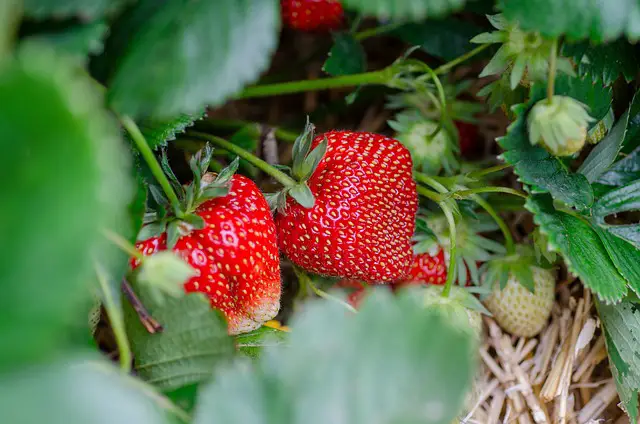
Thinning and Transplanting Strawberry Plants
Understanding the Importance of Thinning
After your strawberry seedlings have germinated, it’s essential to thin them out to ensure healthier and more productive plants in the long run. Thinning refers to the process of removing excess seedlings to provide adequate space and resources for the remaining ones to thrive. This step is crucial because overcrowding can lead to stunted growth, disease susceptibility, and reduced yield.
To thin your strawberry plants, gently remove the weaker or smaller seedlings, keeping only the strongest and healthiest ones. This will allow the remaining plants to receive sufficient sunlight, nutrients, and water, promoting robust growth and development.
Transplanting Seedlings to Larger Containers or the Garden
Once your strawberry seedlings have matured and developed a few true leaves, it’s time to transplant them into larger containers or your garden. Larger containers provide ample space for the plants’ roots to spread and grow, promoting greater nutrient uptake and overall health. Alternatively, you can transplant the seedlings directly into your garden, provided that the soil is well-draining and nutrient-rich.
When transplanting, gently loosen the soil around the seedlings and carefully lift them, ensuring that the roots remain intact. Dig a hole in the new container or garden bed and place the seedling, covering the roots with soil. Water the transplants thoroughly, ensuring the soil is evenly moist.
By following these steps, you’ll be well on your way to successfully growing strawberries from seeds. Remember, consistent care, proper watering, and providing adequate sunlight are all crucial factors in the successful growth and bountiful harvest of your homegrown strawberries.
Conclusion
Final Thoughts on Growing Strawberries from Seeds
In conclusion, growing strawberries from seeds can be a rewarding and enjoyable experience. Although it requires a bit of patience and effort, the end result is worth it. By following the steps outlined in this guide, you can successfully grow your own strawberry plants from seeds.
Savoring the Fruits of Your Labor
Imagine the satisfaction of biting into a freshly picked, juicy strawberry that you grew from a tiny seed. It’s a rewarding experience that allows you to savor the fruits of your labor. Watching your seeds sprout, caring for the plants as they grow, and finally harvesting the ripe strawberries brings a sense of accomplishment and pride.
While it may take some time for your strawberry plants to produce fruit, the wait is well worth it. As the plants mature, you’ll notice tiny white flowers blooming, followed by the formation of small, green strawberries. Over time, these strawberries will turn vibrant red, signaling that they’re ready to be picked and enjoyed.
So, why not give it a try? With some basic knowledge and a little patience, you can use this beginner’s guide to successfully grow strawberries from seeds. Remember to provide the proper care and attention that your plants need, and soon enough, you’ll be enjoying the sweet taste of homegrown strawberries that you grew with your own hands.



